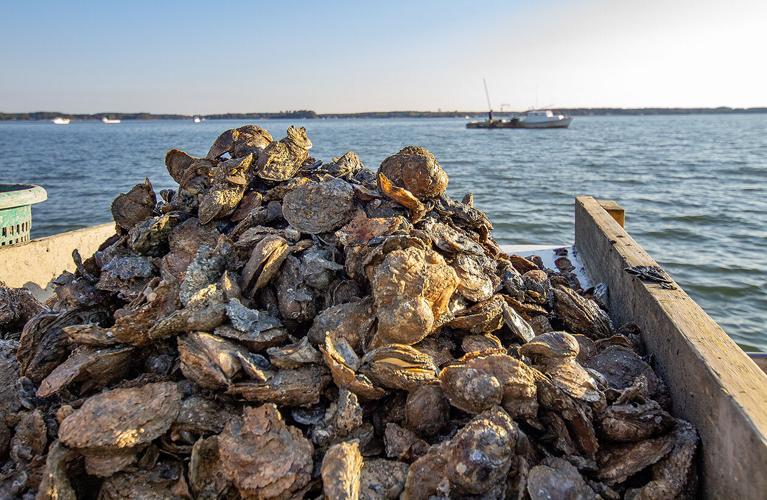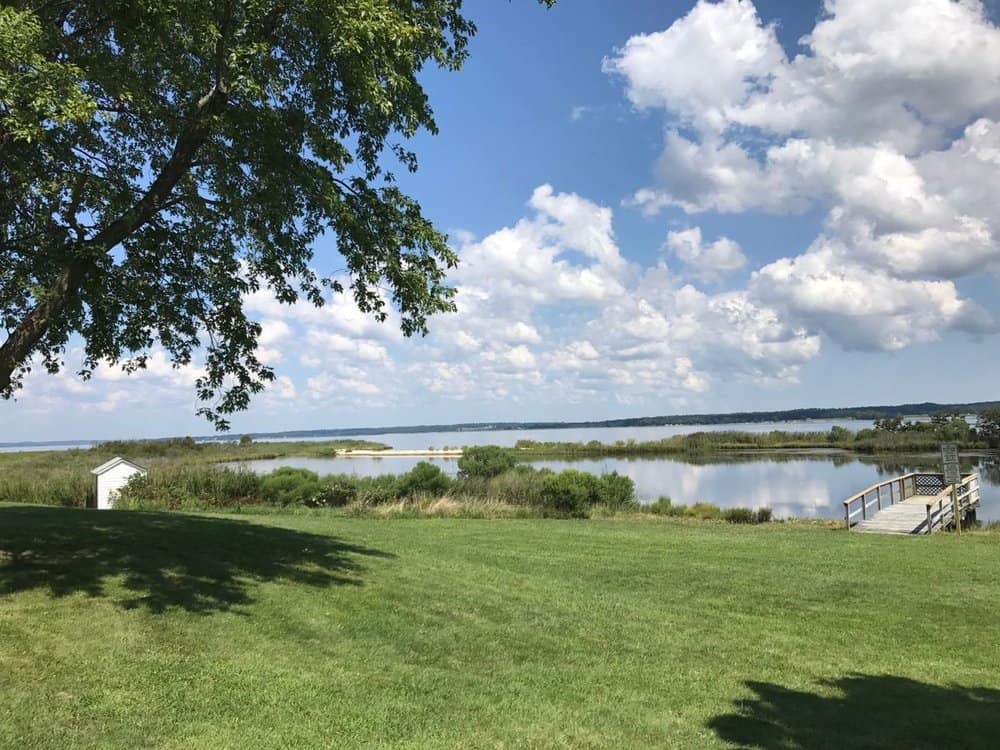By Timothy B. Wheeler, Bay Journal News Service
Maryland waterman enjoyed the best wild oyster season last fall and winter that they’ve had in 35 years, according to preliminary state data, a possible sign the keystone Chesapeake Bay species finally may be recovering from the diseases that began ravaging them in the 1980s.
About 511,000 bushels of oysters were landed in the six-month season that ended March 31, according to a still-incomplete tally from the state Department of Natural Resources. That’s the best harvest since 1986–87, near the beginning of an outbreak of MSX and Dermo that for years afterward killed off most oysters before they could grow to marketable size.
“You couldn’t ask for a better season,” said Jeff Harrison, a Talbot County waterman. He and many others were generally able to catch their limits, often well before each day was over. The bounty continued throughout the season, he said, and the price they got paid for their harvest remained strong, too.
Chris Judy, DNR’s shellfish director, called the wild harvest last season “a notable increase” over the previous year’s, which produced 333,000 bushels. Judy attributed the jump to a few successive years of good natural reproduction, including the third highest count in 2020 of juvenile oyster “spat” in the state’s annual fall survey of oyster reefs.
Those bumper crops of baby oysters, he added, were “followed by good survival that allowed growth to market size.”
Virginia harvest figures for the season are not yet available, but Andrew Button, deputy shellfish manager for the state Marine Resources Commission, said that the oyster population has increased to record numbers there based on annual reef surveys.
As MSX and Dermo drove the wild harvest down in both states, Maryland’s landings hit a record low of 27,000 bushels in 2003–04. But the diseases have since abated and haven’t caused significant a die-off for years.
Record rainfall in 2018–19, though, lowered salinity in the Bay and its rivers, curbing oyster growth and reproduction and even killing oysters in some places. Maryland and Virginia both imposed harvest restrictions, reducing daily bushel limits. Virginia also shortened its season by a month, while Maryland banned harvests on Wednesdays, reducing the workweek to four days.
The salinity has since rebounded, and DNR’s juvenile spat count in 2020 was the best in more than two decades. The agency lifted its Wednesday harvest ban in 2021 while retaining the lower daily bushel limits.
Virginia did not ease any of the curbs on its wild fishery, which Button said has meant that, lately, the state’s wild harvest has not grown as much as Maryland’s.
The same weather and water conditions in 2020 and 2021 that helped the wild oyster stock reproduce and grow also aided Maryland oyster farmers, who saw their harvest from leased bottom reach a record 90,029 bushels last year, surpassing its previous high of 73,000 bushels in 2017, according to DNR data.
“It’s a good time for oyster farmers,” said Scott Budden, co-owner of Orchard Point Oyster Co.
The increase in Maryland’s wild harvest gave Mike Wilberg some satisfaction. The fisheries scientist with the Chesapeake Biological Laboratory of the University of Maryland Center for Environmental Science helped to lead a computer-driven stock assessment of the oyster population for DNR. Factoring in reams of historical and recent data, the scientists’ mathematical model had projected the harvest this past season would be nearly 500,000 bushels.
“You’d expect the fishery to show a response after a stellar spat set year,” Wilberg said. “The question then becomes, what’s going to happen in future years?”
Rachel Dean, who oysters in Calvert County, said she wouldn’t mind seeing the daily bushel limits restored to what they had been in 2018.
“If we needed to take cuts when things were down,” she said, “then the opposite should be true when things are up.”
But Dorchester County waterman Bubby Powley and a few others said they’re not anxious to return to more relaxed catch limits.
“We’re happy where it’s at,” he said. “Right up to the last day, people were catching their limits. … It’s better for the market. It stretches things out.”
Harrison, the Talbot County waterman, said there’s no evidence now that the population is being overfished, something scientists had warned was happening to a significant degree just a few years ago. Not only have there been more oysters to harvest, he noted, but they’re bigger on average.
“It shows the areas are sustaining themselves,” he said. Now, he added, “there’s an opportunity to grow our industry, if we could just work it out with the environmental people.”
Another bumper crop of baby oysters this summer could help sustain the current harvest or even nudge it higher, Wilberg suggested.
“One of the big factors in all of this is we haven’t had a severe disease event in 20 years now,” Wilberg said, “so I credit the recovery of the oyster population a lot to that.”
Next year, Wilberg said, the model projects a harvest in the range of 350,000–400,000 bushels.
You can read this story in its entirety at bayjournal.com.




